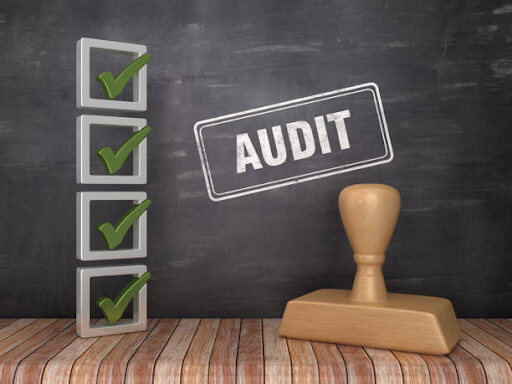Tech businesses must conduct flawless security audits if they want to safeguard their assets, keep their customers’ trust, and stay in compliance with legislation.
Audits of security measures can assist find weak spots, evaluate danger, and verify their efficacy. For accurate and complete security audits, below is a complete guide:
1. Establish Well-Defined Goals and Objectives
The goals and boundaries of a security audit should be defined before the audit begins. Find out what you want to accomplish, whether it’s finding security flaws, checking for compliance, or analyzing the effectiveness of security policies. It is important to specify in the scope what data, applications, and systems will be audited.
Startups must indicate whether the audit will concentrate on application security, network security, or both. By outlining these criteria, we can guarantee that the audit will be thorough and focused, avoiding duplication of effort.
2. Collaborate with Experienced Auditors
A competent team is necessary for a security audit to be successful. Put together a group of experts who have worked in cybersecurity, risk analysis, and regulatory compliance. Staff your team with experts who are familiar with your industry’s security standards, laws, and technological stack.
Members of the internal staff as well as, ideally, outside specialists, should make up the audit team. While internal employees can shed light on the inner workings of the company, outside experts can offer a fresh viewpoint and up-to-date information on potential dangers.
3. Perform a Risk Analysis
The foundation of any good security audit is a comprehensive risk assessment. Find out what might go wrong with your startup’s security and figure out how to fix it. In this step, we look at possible dangers, weak spots, and the consequences of security breaches.
When evaluating potential dangers, make use of risk matrices, vulnerability scanners, and threat modeling software.
Finding out what resources are most important, how compromising them could affect things, and how likely different threats are to happen is the goal. Let’s say if you want a digital finance audit then searching the market via Gas evex will help you better learn about crypto trends. The audit process is guided and areas of emphasis are prioritized by this assessment.
4. Evaluate Current Security Policies and Practices
To make sure your startup complies with all applicable regulations and industry standards, you should review its current security policies and processes. Policies concerning compliance, incident response, data protection, and access control should all be part of the audit.
Check that all employees have received the most recent policy and that it is clearly stated. Establish a system to review and update security measures regularly. Risks and security holes might result from policies that are either out of date or not fully implemented.
5. Carry Out Extensive Inspections
An essential part of any security audit is testing. Find security flaws and see how well your controls are working by doing a variety of tests. Here are some common testing methods:
- Find security holes in your systems by simulating actual attacks with penetration testing. Finding security holes that bad guys could exploit is what penetration testing is all about.
- Automated vulnerability scanners can check your software and hardware for previously discovered security flaws. Scanning regularly helps find vulnerabilities before they can cause harm.
- Evaluations of Configuration: Check that system settings adhere to safety best practices and don’t put systems at undue risk.
- Do not rest until you have tested every possible aspect of your technological stack methodically and comprehensively.
6. Evaluate and Record Results
To uncover security flaws and threats, examine the results of the tests and evaluations. Include the type of vulnerability, its possible impact, and any proof obtained during testing in your thorough descriptions of each finding. To learn about the trading market for higher crypto revenues using Gas evex will help you learn the market.
Sort the results in order of severity and how they might affect your startup. The most pressing problems can therefore be addressed by concentrating on the top priorities, thanks to this prioritization. Your security posture can be better understood and actionable repair strategies can be more easily created with thorough and accurate documentation.
7. Create Fix Plans and Put Them Into Action
Create strategies to fix the vulnerabilities and dangers that have been found using the results. The plans ought to contain detailed steps to address every problem, delegate tasks, and establish due dates.
Your startup’s resources and limitations should inform the development of workable repair plans. Quickly put the plans into action and make sure the improvements fix the issues. To keep up with evolving hazards and alterations in your technology environment, it is important to periodically assess and revise the remediation strategies.
Conclusion
If you want your startup to succeed in the long run, you must ensure that your security audits are conducted accurately. Effective vulnerability identification and mitigation is possible for companies with well-defined goals, a competent staff, thorough testing, and solid remediation strategies.
Enhance your startup’s security posture by doing regular follow-up reviews, maintaining good communication, and staying informed on security trends. Protecting your startup from possible dangers and helping it thrive requires a proactive and comprehensive approach to security audits.


